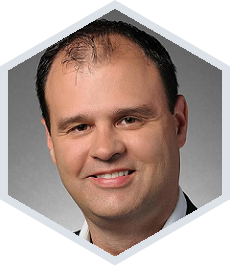





Few trends have impacted the solution provider business more than the shift to recurring revenue. Driven by changes in IT consumption, you and your peers have had to adjust to a new model where consumers rent capacity and functionality over time and often demand the flexibility to reduce capacity based on changing needs.
As much as this has been an opportunity, it's also been a challenge for providers to re-tool sales structure, compensation, and support models, and remake how they look at cash flow and investments. However, what's clear is that managed services are here to stay and growing. In IPED Channelytics' 2019 Partner Census, and our latest managed services research, we look at some of the significant trends impacting solution providers' search for recurring revenue.
The MSP business model is growing in popularity
Operating as an MSP has surpassed VAR as the #1 primary business model in IPED Channelytics latest partner census. In fact, 70% plan additional investments in managed services capabilities in the coming years. While 34% of solution providers cite MSP as their primary business model, it's also become a leading secondary business model for VARs. Today, most partners operate in some version of a blended business model, with fewer and fewer "pure-plays," putting all their eggs in one basket.
Annual Partner Census — blended business models
Source: IPED Channelytics 2019 Partner Census
MSP delivery models dictate profit
Most managed services are delivered in an arrangement where the customer owns the assets to be managed, and the solution provider manages the asset remotely. This accounts for 41% of all managed services revenue delivered. Scenarios where the partner owns and manages the asset account for only 30% of revenue solution providers derive from managed services. Many partners shy away from this full ownership model as the cost of entry is prohibitive unless the solution is custom-built for a specific customer.
MSP revenue and investments
Source: IPED Channelytics 2019 Partner Census
Managed services offerings often differ based on customer target. MSPs serving the SMB space primarily, build highly repeatable and fully automated services that can scale across a large number of customers with little variation. In this market segment, repeatable, predictable offerings are essential for maintaining margins. MSPs targeting the enterprise space offer more bespoke services, allowing customers to specify the technology used to provide the service. In fact, according to the 2019 Partner Census, in this enterprise end-user space, 80% of MSPs say they give their customer input to the underlying delivery platform, with 30% stating they give customers "significant" input.
Infrastructure and security services drive margins
In terms of profit numbers, your peers cite an average gross margin on managed services of around 43%, with margins scaling to 75% where solutions are highly automated. From a top-line perspective, partners report that 60% of their revenue is coming from infrastructure services vs 40% in application management services. Solution providers rated network management services as the most often delivered and most profitable services. However, 75% noted that network management services is one of the offerings under the most margin pressure due to commoditization. When looking toward future profits, your peers see security managed services, particularly end-to-end monitoring from device to the datacenter as their top new investment over the coming 12-18 months.
Lastly, vendor business practices are hurting MSP margins. Aside from the cost of training and keeping staff certified, MSPs say an additional drain on profit is vendors who are slow to adopt consumption-based or subscription acquisition models. As your customers expect to pay by the drip for your services, often partners are required to invest in the vendor infrastructure upfront. Vendors have been slow to get the message that they must adopt business practices that allow MSPs to build their infrastructure in the same way to provide it to customers — "as a service."
Bottom line: Align your delivery model to your customers
As you grow your own managed service business, it's critical to align your delivery model to your customers to ensure a profitable, scalable business. Different approaches have different cost structures and implications for your operations. As the market for managed services continues to expand, the shift to recurring revenue will bring both a new-found predictability in quarterly revenue and an opportunity to build longer-term services centric relationships with customers.


